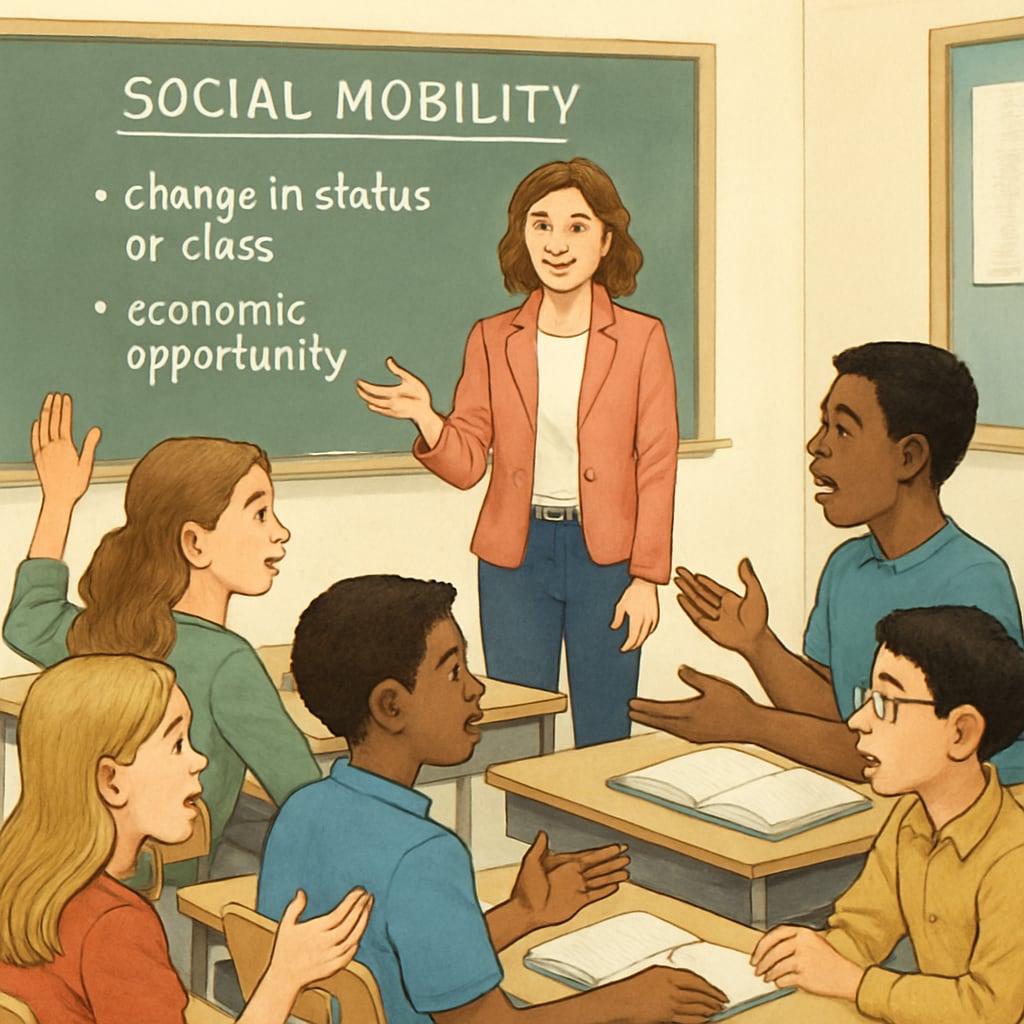In recent years, debates have intensified around how schools approach the topic of social mobility within the framework of “social studies” or “societal education.” Some critics argue that the portrayal of class systems and societal structures in K12 education may inadvertently promote a sense of “class predestination,” implying that upward mobility is unattainable for many. This raises critical questions: Is the school curriculum shaping students’ understanding of social systems in a way that limits their aspirations, or is it equipping them with tools to critically analyze societal structures?
The discussion is far from straightforward. On one hand, education serves as a platform to teach students about the realities of the world, including the barriers that exist within class systems. On the other hand, there’s growing concern over whether such lessons cross into the territory of fatalism, potentially discouraging students from striving for upward mobility. This article explores whether K12 education inadvertently reinforces such narratives, the potential consequences for students’ worldviews, and the need for a balanced approach to teaching societal issues.
How the Education System Frames Social Mobility
Social mobility refers to the ability of individuals or groups to move between different social classes over time. In education, this concept is often introduced through lessons on class systems, historical inequalities, and economic structures. While these topics are undeniably important, how they are framed within the school curriculum can significantly influence students’ perceptions of their own capabilities and opportunities.
For example, curricular materials that overemphasize systemic barriers without highlighting examples of resilience or progress may lead students to internalize a defeatist mindset. This is particularly concerning in underserved communities, where many students already face significant socioeconomic challenges. If students are taught that the system is immovable, they may perceive their own efforts as futile.
However, proponents of such curricula argue that presenting a realistic picture of societal structures is essential for fostering critical thinking and social awareness. By understanding the complexities of class systems, students may be better equipped to challenge inequalities and advocate for systemic change.

The Risks of Teaching “Class Predestination”
The term “class predestination” refers to the belief that an individual’s social class is largely fixed and immutable. While this concept is rarely taught explicitly, critics argue that certain narratives within education—such as a heavy focus on systemic oppression without discussing pathways for change—can unintentionally reinforce it.
Studies have shown that students’ beliefs about their ability to succeed are heavily influenced by their educational experiences. For example, research on social mobility has highlighted the importance of cultivating a growth mindset—an understanding that abilities and circumstances can improve through effort and adaptation. When schools fail to balance discussions of systemic challenges with stories of individual or collective successes, they risk undermining students’ motivation and agency.
Additionally, this issue is not limited to the classroom. The portrayal of social mobility in educational media, textbooks, and even teacher attitudes can shape students’ long-term outlooks. Therefore, educators must critically evaluate whether their teaching materials are inadvertently promoting a sense of inevitability about class divisions.

Balancing Realism and Optimism in Social Studies
So how can educators strike the right balance? The goal should be to present an honest account of societal structures while fostering a sense of empowerment among students. Here are some strategies to achieve this:
- Incorporate diverse narratives: Include stories of individuals and communities that have successfully navigated systemic barriers to achieve upward mobility.
- Promote critical thinking: Encourage students to analyze and debate multiple perspectives on class systems, rather than accepting a single narrative.
- Offer actionable insights: Teach students about tools and strategies—such as education, networking, and activism—that can help them navigate societal challenges.
- Focus on solutions: Highlight examples of policies or initiatives that have successfully addressed social inequalities, emphasizing the role of collective action.
By adopting these practices, schools can create a curriculum that is both realistic and hopeful, equipping students to understand societal structures without feeling constrained by them.
Conclusion: A Call for Educational Balance
The debate over how to teach social mobility in schools reflects broader societal tensions about inequality and opportunity. While it is essential to educate students about the realities of class systems, it is equally important to inspire them to believe in their own potential to effect change. By maintaining a balanced approach—one that combines realism with optimism—educators can empower students to challenge societal barriers and strive for a more equitable future.
Ultimately, education should serve as a tool for liberation, not limitation. Ensuring that students leave school with both a critical understanding of social structures and a belief in their ability to overcome obstacles is not just an academic goal—it is a moral imperative.


